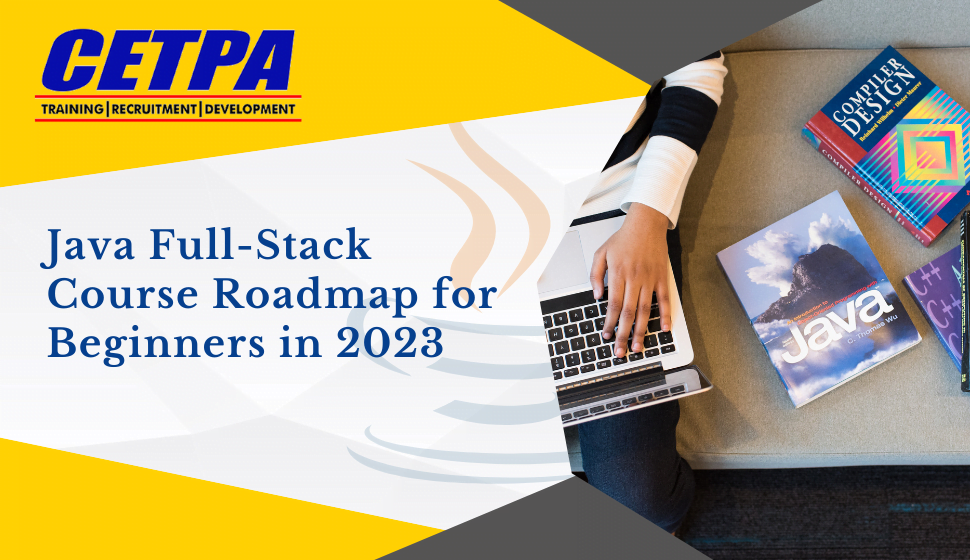Java Full-Stack Course: A Comprehensive Guide for Beginners in 2023

What Is Java Full Stack?
Java Full Stack Development identifies as the procedure of developing web applications with the help of Java. The web applications so developed are for both front-end and back-end components. It is popular for combining Java’s versatility on the server side with well-known front-end technologies such as HTML, CSS, and JavaScript. This combination is made for developing robust and dynamic web solutions.
The Best Java Training Course in Noida offers professionals a comprehensive understanding of both ends. This allows them to design, implement and deploy end-to-end applications which provide seamless user experience and scalable solutions. There are numerous essential technologies and abilities one should concentrate on if they’re a beginner hoping to start a career in Java Full-Stack development in 2023.
Java Full-Stack: A Comprehensive Roadmap for Beginners in 2023
A comprehensive guide to beginning a career in Java Full Stack is provided below:
- Java Fundamentals: Individuals must begin by understanding the basics of Java, including variables, data types, loops, conditional statements, and object-oriented programming concepts.
- HTML, CSS, and JavaScript: Students must also get well-versed with front-end technologies like HTML for page structure, CSS for styling, and JavaScript for interactivity in web pages.
- Front-End Frameworks: It is recommended to students that they must explore popular front-end frameworks such as React or Angular which enhance the ability to develop dynamic and user-friendly web applications.
- RESTful APIs: The Java Full-Stack courses at CETPA Infotech offer students the knowledge of REST and the ways to develop RESTful APIs with Java. The knowledge of APIs is necessary for connecting the front-end and back-end of the applications.
- Back-End Development with Java: Aspiring developers must have a knowledge of server-side programming, handling HTTP requests, and developing the core logic of web applications with Java.
- Spring Framework: It is recommended to master the Spring Framework which is popularly used in Java web development. It offers a comprehensive ecosystem for the development of robust, scalable, and maintained applications.
- Database and SQL: Students must have knowledge regarding the working of databases. They must also learn SQL so as to communicate with databases. Also, a knowledge of database design and management is well appreciated.
- Security: Individuals must understand the web application security practices like handling authentication, authorization, and protection for protection against security issues.
What Is the Future Scope of Pursuing a Java Full-Stack Course?
A Full-Stack Java Training has a broad and promising scope. With Java being a prominent programming language used for web development, learning Full-Stack development opens doors to countless job prospects. Graduates can anticipate being able to design complicated web applications, handle server-side logic, integrate databases, and create interactive user interfaces. The course provides students with knowledge of front-end technologies like HTML, CSS, and JavaScript. Also, students are well-versed in the back-end frameworks like Spring and Hibernate. With organizations looking for competent developers who can manage the whole application development process, such professionals are in great demand. Hence, this makes Java Full-Stack a rewarding and sought-after career path in the IT sector.
Also Read: Exploring Enterprise Application Development in Java Training
Summary
Eventually, pursuing a Java Course in Noida provides a well-rounded and complete education in web application development. This allows the students to become skilled in both front-end and back-end technologies. Students learn to construct scalable, secure, and interactive online applications that match contemporary industry requirements. This gets possible when they get a knowledge of Java and related frameworks such as Spring and Hibernate. The course teaches prospective developers the ways to use HTML, CSS, and JavaScript to construct user-friendly interfaces. It also introduces them to the knowledge regarding the designing of solid server-side components and managing databases with ease. The need for Java Full-Stack developers remains high in the IT industry. This is because companies seek specialists who can handle end-to-end programming while also providing seamless user experiences.
Thus, students who complete this course are well-equipped to work as Full-Stack Developers, Web Application Developers, Software Engineers, etc. Pursuing a profession in Java Full-Stack development gives up a world of prospects. Due to continued technical advancements and rising reliance on web-based solutions, the software development industry likewise seems to have a prosperous and promising future.



